“There is no decision that we can make that doesn’t come with some sort of balance or sacrifice.” Simon Sinek
Have you ever come across the term “finding a needle in a haystack”. Ask any B-School aspirant, and he is gonna agree that his aspirations have led him into a similar situation. Among the multitudes of business school, each having its traits, fanfare and rich illustrated brochures of their accolades, eventually it comes down to you and where do you find yourself fit.
I will try to elaborate my journey into walking you through the rationale behind how I filtered out my B-School choices.
N.B:The rationale is specific only to Full Time MBA Programs.
DisclaimerIf you are allergic to sarcasm and humor, please be advised the following sections are not meant for you then. Also no aspirant was harmed during the writing of this blog.

*Objects in the mirror are farther than they appear. Hallucinations are not helpful for any GMAT aspirant test taker.
If you’re done taking the GMAT to let’s start decoupling our choices and rationales.
Brand
“It’s always the BRAND that sells.”, denied no B-school ever. The Brand of a B-School is like its USP. It not only boasts about the alumnus pool and their accolades but how the brand resonates in the sweet ears behind the corporate doors.
To put it into context, if you are a website, the B School brand is your SEO.

Branding in the digital era has become a challenge and with the amount of data available, it has become quite difficult to find the sweet spot for the brand.
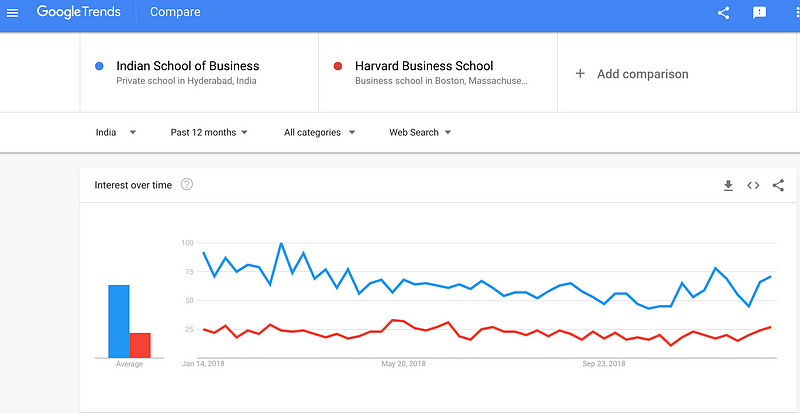
From the google trend report on the left side, trying to compare Harvard Business School to Indian School of Business, HBS is overshadowed as visibly shown in the interest shown for it amongst the aspirants from the world’s second-most populous nation.
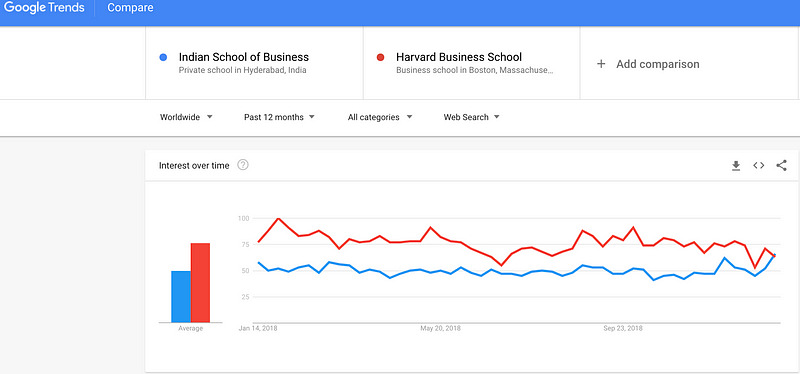
Meanwhile, from a worldwide perspective, HBS has a bigger and higher global presence.
Rankings
Most of the top B schools are featured regularly in the leading financial sites from Financial Times to Economist, Forbes, Fortuna and many more. Nevertheless, these rankings should be considered with a pinch of salt.
The rankings posted by the above institutions all have different methodologies. The frequent KPI metrics used in the rankings consist mostly of [1][2][3][4]
a. Current Salary
b. Student Quality
c. Employment Statistics
d. Faculty
e. Alumni/ Networking.
Each of the above indexes has different weight given by the above-ranking institutions and that is why the rankings of one cannot be compared to the other.

Faculty

“The art of teaching is the art of assisting discovery.” cit. Mark Van Doren
If the Brand of the Business School is the fact that the world will know you after you graduate, the brains of that face is certainly The Faculty that the business school consists of. These are the people who are going to nurture you, assist you, mentor you and ignite that inner spark that laid dormant since the yesterdays of reports, excels and power-points.
Find your John Keating, and rest will take it’s shaping accordingly [5]
Cost
The cost is one of the most important factors that set back and offsets dreams with decisions.
Studying in a B-School is quite expensive and it not only sets you back financially but also the opportunity cost that is lost when you leave your employment to immerse yourself into a full-time program.
a. Financial Cost: Business Schools are extremely expensive and the top 10 B-Schools have quite high tuition fees. The rising of the tuition costs every year does exhibit a challenge to students who get admitted without a scholarship, and this is the part where they either have to let go of their dream school or immerse into an immensely high debt-ridden life onwards.
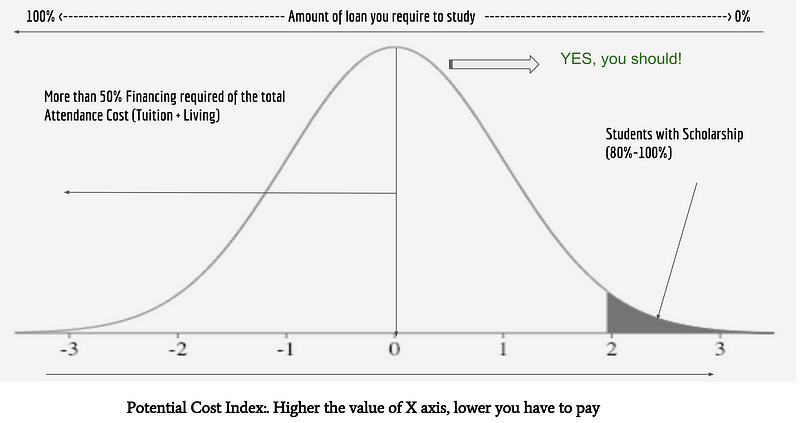
It’s advisable to look at the cost correlating to the return of investment. [6][7]
b. Opportunity Cost: This a qualitative attribute that is very subjective to every applicant. If you’re a company-sponsored candidate, it makes more sense to go for 1 year MBA program, but if you’re looking to switch careers/ industry and increase on your networking in a more spread out period, a longer program brings more impact.
Curriculum &
Cohort
The curriculum of each of the institutes varies in their ways. Harvard exhibits a case-based curriculum while Stanford has more Critical Analytical thinking based courses under its belt [8]. The curriculum is also reflective of the graduates and their post-MBA goals.
Wharton is favored for its strong Financial Ties and its alumnus are quite synonymous in Wall Street, Kellog’s portrays a stronger marketing-centric curriculum through its alumni while Oxford Said has stronger non-profit cohort connections.
Talk with a few of the alums and try to understand what kind of goals you would like to achieve.
Community:
Community is an integral part of the business school. It defines how the institute revolves and evolves. Each university has its specific community traits that mold the students during their time at the program.

For example, the Oxbridge students tend to visit London every weekend, while students from LBS, STERN and SDA Bocconi have a circle of non-MBA peers. Meanwhile, in Berkley students live far away from each other.
The class size is also a factor in the bonding of the community. Harvard boasts of a class size of 934 students while Stanford GSB has half of Harvard’s strength in terms of numbers. Smaller class size does proportionately increase higher chances of networking with more people.
For the European counterparts, INSEAD leads with a strength of over 1000 students followed by IE Business School with 735 and LBS with 485. On the other hand, IMD in Switzerland and Mannheim in Germany have 90 and 55 students filling up the classes. [9][10]
Employability
Employability and employment. Ahh, dreading those high paying cheques? Then stop dreaming. It’s you who matters. The business schools open up the doors, but they don’t use the imperious curse to sail you through an interview.
It’s on the onus of the student to make the best use of one’s self to increase the employability.
The employability, of course, varies for different nationals coming from different demographics. It’s obvious that in spite of living in a Global village, visas and employability does cause a crucial impact along with the volatile social-political impacts.
But most of the top schools are famed for their brand and the students do get to enjoy these in terms of the employment and employability statistics. [11][12][13]
Money, where art thou?
Location
The location of a business school is quite important for the following reasons.
- The natural beauty.
- The job opportunities surrounding the B School Region.
- The living cost incurred by a potential student.
For point 1, a lot of students prefers natural beauty based lush green campus locations in compared to a super cosmopolitan environment surrounded by concrete walls.
For point 2, this does impact a lot. For example, if you want to work in Bay Area, then studying at Stanford, Berkley makes more sense than studying in a premier college at the East Coast as the students here are slightly more engaged with the diaspora flocking this zone.
For point 3, the living cost does directly correlate to the cost of your program and might put you back with a higher saving: financing ratio. Ideally, the aspirant decides which zone suits them best. [14]
Sorted?
Choose your place wisely because no one knows you better than what you want and where you want to see fit.
Because remember, the journey has just begun, the right fit shoes will ease your journey and make it more memorable in the years to come.

Thanks for reading.
And so where did I choose to go?
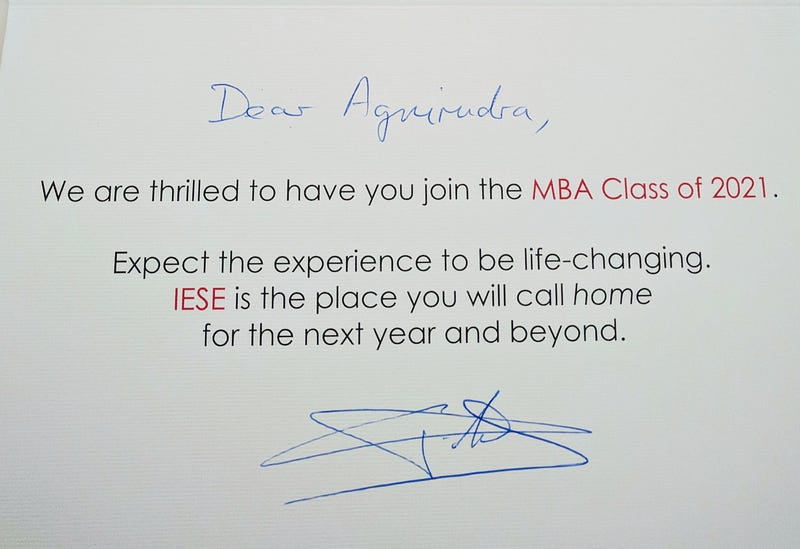
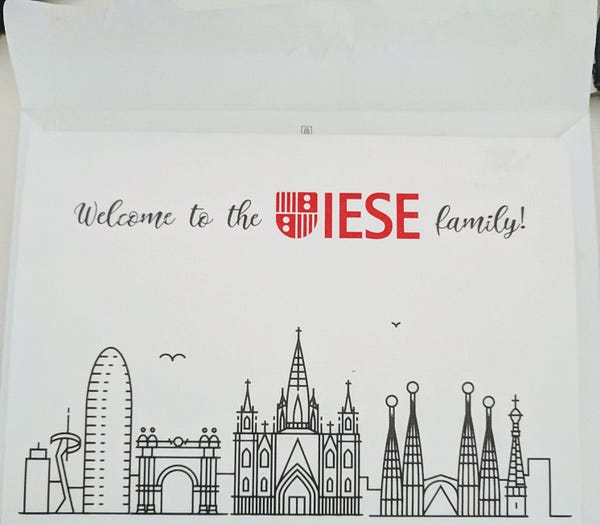
References:
[1] https://www.ft.com/content/1bf3c442-0064-11e8-9650-9c0ad2d7c5b5
[2] https://www.economist.com/whichmba/full-time-mba-ranking-methodology-2018
[4] https://www.forbes.com/business-schools/#4ab392876d6d
[5] https://poetsandquants.com/2018/03/10/business-schools-with-the-best-teaching-faculty/
[6] https://poetsandquants.com/2017/08/11/what-a-harvard-mba-now-costs/
[8] https://www.topmba.com/usa-canada/harvard-business-school-vs-stanford-graduate-school-business
[9] https://poetsandquants.com/2018/01/10/the-data-is-in-the-m7-schools-remain-on-top/
[10] https://poetsandquants.com/2018/10/31/mba-acceptance-rates-at-top-european-business-schools/2/
[11] https://www.businessbecause.com/news/mba-rankings/4966/15-best-european-schools-for-jobs
[12] https://ceoworld.biz/2018/01/10/business-schools-employability-ranking-2018/
[13] https://ceoworld.biz/2018/01/10/business-schools-employability-ranking-2018/
[14] https://www.vice.com/en_ca/article/59k4xq/we-asked-students-if-dollar1730-in-rent-is-affordable

